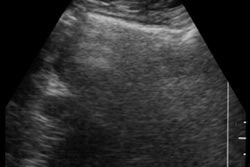Doppler ultrasound shows promise in predicting which patients with renal artery stenosis will gain the most from intervention, according to researchers from the Medizinische Hochschule Hannover in Germany. The group reported the results of their five-year prospective study in the latest issue of the New England Journal of Medicine.
From June 1994 to November 1999, Dr. Jorg Radermacher and colleagues performed color Doppler ultrasonography on 5,950 patients who had hypertension and other clinical features suggestive of renal artery stenosis. All of the patients had experienced a lack of success with antihypertensive drugs or had been diagnosed with coronary, peripheral vascular, or cerebrovascular disease.
"In 20% to 40% of patients, [angioplasty or surgery] does not improve blood pressure or renal function. There is no reliable way to identify these patients prospectively," the group wrote. "Our technique for color Doppler ultrasonography to evaluate renal artery stenosis enables us to identify a reduction in the diameter of renal arteries of at least 50%, with a sensitivity of 97% and a specificity of 98% (NEJM, February 8, 2001, Vol.334:6, pp.410-417).
All of the patients were scanned in a supine position with the Ultramark 9 HDI (ATL Ultrasound, Bothell, WA), using either a multifrequency curved-array transducer (2 to 4 MHz) or a multifrequency sector transducer (2 to 3 MHz). A 2.5-MHz pulsed-Doppler frequency and a focal zone at the depth of the renal arteries also was used.
Out of the total study population, 138 patients had stenosis of at least 50% of one renal artery based on the ultrasound results. These patients were then divided into two groups: those with a segmental-artery resistance-index value of 80, and those with an index of less than 80.
"These patients underwent angiography, angioplasty with or without stent placement, or surgery to correct these stenoses…the measurements of blood pressure and creatinine clearance and the ultrasonographic procedure were repeated three, six and 12 months and yearly thereafter," the authors wrote. An improvement in blood pressure was defined as a decrease in the mean arterial pressure of at least 10-mm Hg with no additional change in the number of antihypertensive drugs.
Renal-artery stenosis was corrected with angioplasty in 81 patients, with both angioplasty and stent placement in 42 patients, and with surgery in eight patients. After correction, the patients with resistance-index values of at least 80 had decreases in renal function and little improvement in blood pressure, the group reported.
However, both renal function and blood pressure improved in patients with resistance-index values of less than 80. In this group, the ultrasound exam had a sensitivity of 96%, a specificity of 79%, a positive predictive value of 86%, and a negative predictive value of 93% in determining index values.
"We found that a renal resistance-index value of at least 80 before revascularization was a strong predictor of worsening renal function, and a lack of improvement in blood pressure despite the correction of renal-artery stenosis," the authors concluded. "The development of methods to identify patients who will benefit from the intervention or those who would only be harmed by it should have a high priority."
The group added that Doppler ultrasound has an advantage over other noninvasive tests, such as captopril scintigraphy, because the latter is less accurate in patients with renal impairment and in patients with bilateral renal artery stenosis.
By Shalmali PalAuntMinnie.com staff writer
February 9, 2001
Related Reading
Angioplasty of ostial renal artery stenoses lasts longer with stenting, August 18, 2000
Click here to post your comments about this story. Please include the headline of the article in your message.
Copyright © 2001 AuntMinnie.com



















